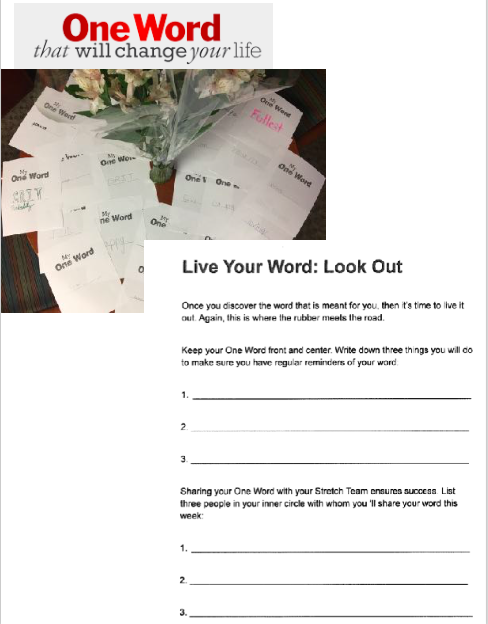Sunday, September 24, 2017
Monday Motivator #6
Many of us determined our 'One Word' for the year. Staley HS also did this as part of their Universal Behavior lessons to kick off September. I know some of you also did this with your staff.
Now that it is almost the end of September, how are you doing with meeting the goal of your One Word? On my drive home at the end of each week, I try to reflect on what I have accomplished related to my One Word so far. Respond to this blog with other ideas you have done with staff and/or students!
Mr. Kooi sets the stage for the week of lessons related to their Portrait of a Graduate and One Word:
https://youtu.be/0qzwSqOL4i8
http://getoneword.com/category/success-stories/
Monday, September 18, 2017
Monday Motivator #5
Love the Kid President! You may have seen this before but a great one that shares tips on how to disagree respectfully.
https://www.youtube.com/watch?v=ghk-nDJB3Tk
Have a wonderful, positive week!
Sunday, September 10, 2017
Motivator #4 2017-18
Changing Two Words
Clare Landrigan and Tammy Mulligan
Teachers can position children as competitors or collaborators, and themselves as referees, resources, or judges, or in many other arrangements. A teacher's choice of words, phrases, metaphors, and interaction sequences invokes and assumes these and other ways of being a self and of being together in the classroom.
Peter Johnston in Choice Words
We think the words we choose are critical to creating a collaborative learning culture with students and colleagues. As coaches, we are always mindful of the words we choose and how they affect our colleagues. We find that how we say something is often more important than what we say. Here are two word choices that set us up to be collaborators rather than judges:
"We" Versus "I"
“I” and “me” statements are encouraged in consultation conversations. They are useful in certain situations to take ownership for our perspectives, feelings, or reflections. At other times, we find it more helpful to use “we” or “us” statements. When we use the collective “we” in reflections, planning, or feedback sessions, we are including ourselves in the conversation. The ideas discussed become valuable feedback for all teachers, not just one teacher. It sets a tone that each of us is learning and growing. When we include ourselves in the conversation, we model that we are all in this together and create a disposition of lifelong learning and striving toward mastery.
"And" Versus "But"
When as coaches, we share our observations of students and instruction, we can fall into the trap of being negative even when we mean to be positive. When we notice and name what we observe happening and follow it with the word “but,” it negates the recognition of the progress that has been made. When we follow that same information with the word “and,” it first recognizes and celebrates progress that has been made before we shift to next steps. The word “and” connects or includes the first part of the sentence rather than negating it in favor of the second part of the sentence. We find when we use “and” instead of “but,” it has a positive effect on the conversation and leads to a more collaborative, learning stance.
These changes may seem small, but our choice of words has made a huge difference in the culture we create for professional learning.
|

Clare Landrigan and Tammy Mulligan have been working in the field of professional development for the past 16 years. They now run a private staff development business, Teachers for Teachers, working with varied school systems to implement best practices in the field of literacy and to engage in institutional change. They are the authors of Assessment in Perspective: Focusing on the Readers Behind the Numbers , available from Stenhouse Publishers.
, available from Stenhouse Publishers.
https://leadliteracy.com/articles/373
Monday, September 4, 2017
Monday Motivator #3 2017-18
As Denee Noble launches her workshops for the beginning of the year, she is building a community of kindness in her class. She has taught her students the importance of kindness and is helping them notice kindness in others. Each day, she gives out several kindness bracelets. Students that receive them then notice someone else that was helpful or kind and give their bracelet to that student. She collects them at the end of the day and begins the process all over again the next day.
Xander got a bracelet at the beginning of the day, and then he explains why he gave his to a classmate. https://youtu.be/BWJ7eIWgwAM
Mrs. Noble teaches second grade at Northview Elementary. Thank you, Mrs. Noble for setting such a positive tone to kick off the school year! Looking forward to seeing how this evolves throughout the year!
Xander got a bracelet at the beginning of the day, and then he explains why he gave his to a classmate. https://youtu.be/BWJ7eIWgwAM
Mrs. Noble teaches second grade at Northview Elementary. Thank you, Mrs. Noble for setting such a positive tone to kick off the school year! Looking forward to seeing how this evolves throughout the year!
Subscribe to:
Comments (Atom)
Monday Motivator #18 2025-26
Looking Back to Move Forward Bitsy Parks It was the first day back after winter vacation, and I looked at the plans that I had penciled i...

-
Charts at Tools, Charts as Teachers We’ve all been in (or, at times, have been) the classroom that has chart paper as wallpaper. Every ope...
-
Simplicity is often one of the greatest strengths. —Erik Spoelstra Simple Joys: No More Extra-Extra https://choiceliteracy.com/article/aug...
-
Research-Based Tips for Optimal Seating Arrangements The right approach to seating works behind the scenes to keep students focused on lea...


